Closed drainage system
For drainage of groundwater and infiltrated water, a closed drainage system is being constructed. The drainage system is a system of pipelines that diverge throughout the section towards the drainage wells. This technology effectively solves the problem of soil water balance. In this article we will look at how the drainage system of a closed type is arranged, its features, as well as how to build it with your own hands.
Features of the deep drain

If there is a high soil moisture in your area, then closed drains can solve this problem. By building such a system, you can prevent the flooding of the basement and cellar. Unlike open, closed drainage requires more labor. Pipe laying is carried out by a special technology. The depth of the strip should reach 600 mm in clay soil, and if the soil is sandy, one meter. The diameter of the pipes of the main channel should be 100 mm, and auxiliary branches - 75 mm.
Tip! Methods for laying drainage pipes can be very different. For example, the herringbone method is very popular. It is considered the most effective.
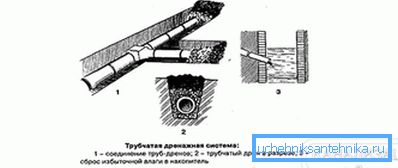
An important element of the entire system is a drainage well into which all the water flows. Although it will take a lot of resources to make it, in the dry season you can use this water to water the plants.
Pipes and other drainage equipment

For drainage you can use special corrugated perforated plastic pipes. This material does not harm the environment. Working with them is easy. If the site is dominated by clay soil, it is important to provide filter material that will protect the pipeline. If sandy, then from the rubble of a large fraction it is necessary to make a bedding about 200 mm thick. Then the pipes are wrapped in geotextiles. This will prevent silting of the holes in the pipes.
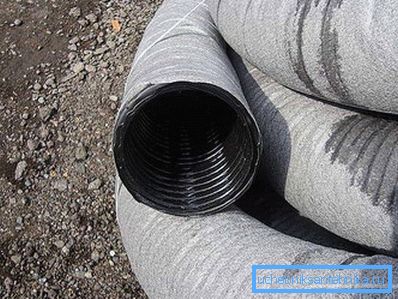
Tip! To simplify and speed up the work, you can purchase ready-made pipes that are wrapped in geotextile and ready for installation.
We start the installation work
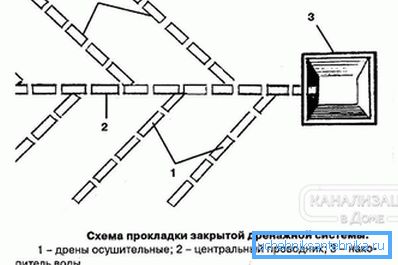
Before you start to construct a closed drainage, it is necessary to develop an installation scheme. The existing project will help in advance to calculate the right amount of building materials. To create a project does not necessarily resort to the help of specialists. You can make the appropriate calculations yourself.
So, when all the preparatory work is done, you can begin to dig a pit. The first thing is to dig a trench of the desired depth. Then geotextiles are laid at the bottom of the pit. If you decide not to use geotextiles, then it is mandatory to put 150 mm of sand on the bottom of the trench. After that, the pipes are laid, which are filled with rubble of coarse fraction and expanded clay.
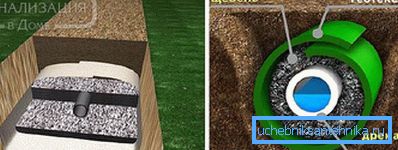
Tip! In the process of installing drainage pipes, follow the pipe slope. On average, 10 m should be a difference of 7 cm.
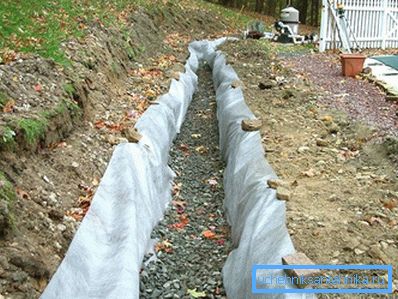
Special pipes and adapters are used to connect and dock pipes. The trench is filled with soil, which was removed earlier. Consider the fact that the land tends to subside, so make the mound a little more than necessary.
Arrangement of the well
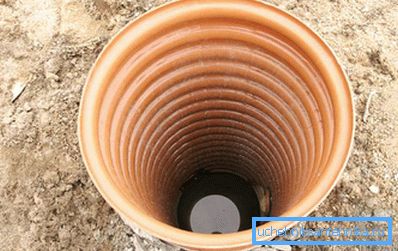
The well will serve as a gathering place for all stocks. You can make it yourself from bricks or from reinforced concrete rings. You can buy a finished plastic container with a large volume. How to make a drainage well, you can read here. To the well it is necessary to bring the pipes that collect water from the entire network of the pipeline, buried in the ground. It is possible to pump out water by means of the pump for use of technical water.
So, we have reviewed with you a closed drainage device. If you have any questions, see the video below. In addition, you can contact our experts who will advise you on issues of interest. If you have your own experience in making closed drainage, share it, leaving comments at the end of the article.
Video
Read more about the advantages and device of deep drainage in the video:
Closed drainage in action:
See also:
- How to make wall drainage around the house.
- On the types of drainage.
- What is reservoir drainage.